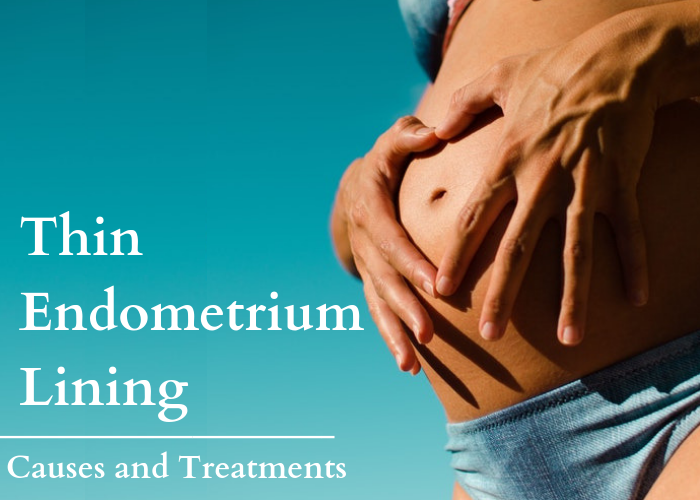
In order for a pregnancy to occur, the embryo implantation must must occur into endometrium (uterine lining).
Two hormones produced from the ovaries thicken and prepare the endometrium for implantation.
Estrogen thickens the endometrium and further progesterone causes the thickened endometrium to develop the characteristics needed for implantation.
Numerous studies have found that if a woman has a persistently thin endometrium despite receiving adequate amounts of estrogen, then the chance for pregnancy is reduced.
How Thin is Thin Endometrium?
7mm is the commonly accepted cut off, below which we label endometrium as thin endometrium. Apart from thickness, pattern and vascularity also play an important role in predicting chance of pregnancy.
Causes for Thin Endometrium –
1) The most common reasons include infections or previous surgeries resulting in endometrial damage.
In our country tuberculosis of the endometrium is very important and common cause of thin and irreversibly damaged endometrium.
Apart from tuberculosis, chronic bacterial infections, sexually transmitted infections and pelvic inflammatory diseases can lead to permanent scarring of endometrium.
Surgeries inside the uterine cavity like D&C, intracavitary myomectomy etc. could also cause scar tissue to form which replaces the normal uterine lining.
2)Other causes include low estrogen levels – Endometrium is estrogen dependent tissue and if due to any reason estrogen stimulation is not sufficient, the endometrial layer will remain thin as seen in pre-pubertal girls, postmenopausal women and in cases of hypo gonadotropic hypogonadism
3) Inadequate uterine blood flow: Uterine blood flow is an important factor controlling endometrial growth and impaired uterine flow can result in thin endometrium.
4) Systemic Causes: Certain diseases like Hypertension, Diabetes Mellitus, Asthma, Depression, Epilepsy, Substance abuse like smoking are also said to increase the incidence of thin lining.
5) Idiopathic: In some cases the cause may remain unknown. It may be due to individual uterine architecture as well.
Possible Treatments for Thin Uterine Lining:
In cases of scarring of endometrium with adhesions between uterine walls, adhesiolysis (breaking the adhesions) is required.
Apart from this approach, traditionally low dose aspirin, vaginal sildenafil, pentoxfylline, tocopherol, L- Arginine and estrogen are administered for building the endometrium.
Novel approaches to Improve the Endometrium
1) G-CSF: G – CSF is a type of colony stimulating factor which is produced by different tissues like endothelium, macrophages and a number of immune cells. In some studies, it has shown to improve endometrial thickness by releasing certain cytokines (proteins that act as chemical messengers).
2) Platelet rich plasma : Intra uterine infusion of platelet-rich plasma (PRP) is a new approach for the treatment of thin endometrium. In some studies, it has shown to improve endometrial thickness by releasing certain cytokines (proteins that act as chemical messangers) and growth factors.
3) Stem Cell Therapy: Since the cells of the endometrium arise from stem cells at the bottom or base of the endometrium. There have been recent studies looking at treatments to stimulate these stem cells to produce a healthier, thicker endometrium.
For any query related to thin endometrium, contact Jindal IVF at 01724911000, +91 9418127128 or request a call back here



